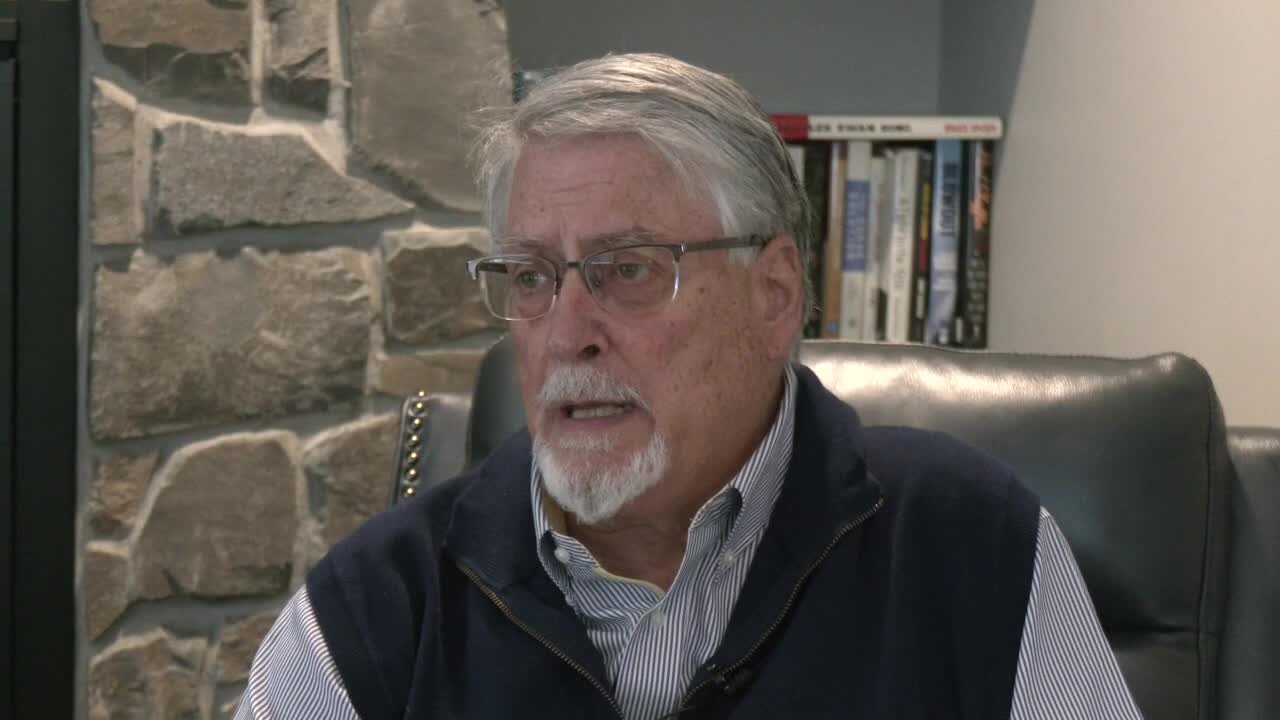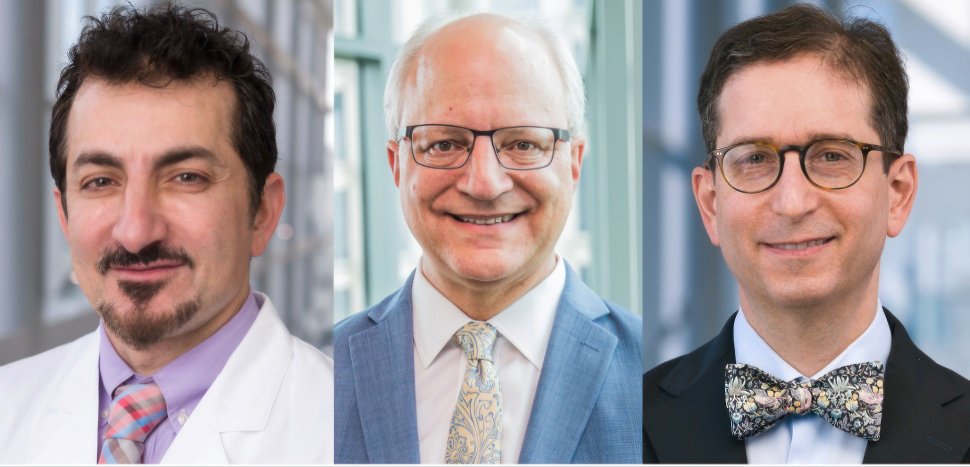AI Research
Exploring institutions for global AI governance

New white paper investigates models and functions of international institutions that could help manage opportunities and mitigate risks of advanced AI
Growing awareness of the global impact of advanced artificial intelligence (AI) has inspired public discussions about the need for international governance structures to help manage opportunities and mitigate risks involved.
Many discussions have drawn on analogies with the ICAO (International Civil Aviation Organisation) in civil aviation; CERN (European Organisation for Nuclear Research) in particle physics; IAEA (International Atomic Energy Agency) in nuclear technology; and intergovernmental and multi-stakeholder organisations in many other domains. And yet, while analogies can be a useful start, the technologies emerging from AI will be unlike aviation, particle physics, or nuclear technology.
To succeed with AI governance, we need to better understand:
- What specific benefits and risks we need to manage internationally.
- What governance functions those benefits and risks require.
- What organisations can best provide those functions.
Our latest paper, with collaborators from the University of Oxford, Université de Montréal, University of Toronto, Columbia University, Harvard University, Stanford University, and OpenAI, addresses these questions and investigates how international institutions could help manage the global impact of frontier AI development, and make sure AI’s benefits reach all communities.
The critical role of international and multilateral institutions
Access to certain AI technology could greatly enhance prosperity and stability, but the benefits of these technologies may not be evenly distributed or focused on the greatest needs of underrepresented communities or the developing world. Inadequate access to internet services, computing power, or availability of machine learning training or expertise, may also prevent certain groups from fully benefiting from advances in AI.
International collaborations could help address these issues by encouraging organisations to develop systems and applications that address the needs of underserved communities, and by ameliorating the education, infrastructure, and economic obstacles to such communities making full use of AI technology.
Additionally, international efforts may be necessary for managing the risks posed by powerful AI capabilities. Without adequate safeguards, some of these capabilities – such as automated software development, chemistry and synthetic biology research, and text and video generation – could be misused to cause harm. Advanced AI systems may also fail in ways that are difficult to anticipate, creating accident risks with potentially international consequences if the technology isn’t deployed responsibly.
International and multi-stakeholder institutions could help advance AI development and deployment protocols that minimise such risks. For instance, they might facilitate global consensus on the threats that different AI capabilities pose to society, and set international standards around the identification and treatment of models with dangerous capabilities. International collaborations on safety research would also further our ability to make systems reliable and resilient to misuse.
Lastly, in situations where states have incentives (e.g. deriving from economic competition) to undercut each other’s regulatory commitments, international institutions may help support and incentivise best practices and even monitor compliance with standards.
Four potential institutional models
We explore four complementary institutional models to support global coordination and governance functions:
- An intergovernmental Commission on Frontier AI could build international consensus on opportunities and risks from advanced AI and how they may be managed. This would increase public awareness and understanding of AI prospects and issues, contribute to a scientifically informed account of AI use and risk mitigation, and be a source of expertise for policymakers.
- An intergovernmental or multi-stakeholder Advanced AI Governance Organisation could help internationalise and align efforts to address global risks from advanced AI systems by setting governance norms and standards and assisting in their implementation. It may also perform compliance monitoring functions for any international governance regime.
- A Frontier AI Collaborative could promote access to advanced AI as an international public-private partnership. In doing so, it would help underserved societies benefit from cutting-edge AI technology and promote international access to AI technology for safety and governance objectives.
- An AI Safety Project could bring together leading researchers and engineers, and provide them with access to computation resources and advanced AI models for research into technical mitigations of AI risks. This would promote AI safety research and development by increasing its scale, resourcing, and coordination.
Operational challenges
Many important open questions around the viability of these institutional models remain. For example, a Commission on Advanced AI will face significant scientific challenges given the extreme uncertainty about AI trajectories and capabilities and the limited scientific research on advanced AI issues to date.
The rapid rate of AI progress and limited capacity in the public sector on frontier AI issues could also make it difficult for an Advanced AI Governance Organisation to set standards that keep up with the risk landscape. The many difficulties of international coordination raise questions about how countries will be incentivised to adopt its standards or accept its monitoring.
Likewise, the many obstacles to societies fully harnessing the benefits from advanced AI systems (and other technologies) may keep a Frontier AI Collaborative from optimising its impact. There may also be a difficult tension to manage between sharing the benefits of AI and preventing the proliferation of dangerous systems.
And for the AI Safety Project, it will be important to carefully consider which elements of safety research are best conducted through collaborations versus the individual efforts of companies. Moreover, a Project could struggle to secure adequate access to the most capable models to conduct safety research from all relevant developers.
Given the immense global opportunities and challenges presented by AI systems on the horizon, greater discussion is needed among governments and other stakeholders about the role of international institutions and how their functions can further AI governance and coordination.
We hope this research contributes to growing conversations within the international community about ways of ensuring advanced AI is developed for the benefit of humanity.
AI Research
Artificial intelligence investing is on the rise since 2013

FARGO, N.D. (KVRR) — “Artificial intelligence is one of the big new waves in the economy. Right now they say that artificial intelligence is worth about $750 billion in our economy right now. But they expect it to quadruple within about eight or nine years,” said Paul Meyers, President and Financial Advisor at Legacy Wealth Management in Fargo.
According to a Stanford study, since 2013, the United States has been the leading global AI private investor. In 2024, the U.S. invested $109.1 billion in AI. While on a global scale, the corporate AI investment reached $252.3 billion.
“Artificial intelligence is already in our daily lives. And I think it’s just going to become a bigger and bigger part of it. I think we still have control over it. That’s a good thing. But artificial intelligence is helpful to all of us, regardless of what industry you’re in, and we need to be ready for it,” said Meyers.
Recently, Applied Digital has seen a dip in its stock by nearly 4%. The company’s 50-day average price is $12.49, and its 200-day moving average price is $9.07. Their latest report in July reported their earnings per share being $0.12 for the quarter.
“This company has grown quite a bit as a stock this year. For investors in this company, they’re up ninety-four percent this year. And I would say that you know there’s some positives and some negatives, some causes for concern, and some causes for optimism, it’s not a slam dunk,” said Meyers.
At the city council meeting on Tuesday night, Don Flaherty, Mayor of Ellendale, shared that they had not received any financial benefits from Applied Digital and won’t see any until 2026. While Harwood has yet to finalize their decision on the proposal.
AI Research
NIH Taps UT Southwestern Medical Center for $23M North Texas Alzheimer’s Disease Research Hub » Dallas Innovates

The leadership team for UT Southwestern’s new North Texas Alzheimer’s Disease Research Center includes principal investigator Dr. Ihab Hajjar (left), O’Donnell Brain Institute director Dr. William Dauer, and neurology chair Dr. Elan Louis. Their work will push the frontier of dementia research, as well as support community outreach and training for caregivers. [Photos: UT Southwestern Medical Center]
North Texas is the newest federal front line in the fight against Alzheimer’s and dementia.
The National Institute of Health has awarded UT Southwestern a $23 million, five-year grant from the National Institute on Aging to establish the North Texas Alzheimer’s Disease Research Center (ADRC). The designation makes it one of 37 such centers nationwide and the second in Texas, according to an announcement.
The new center, based at UT Southwestern Medical Center, will be a focal point for research that could reset how the disease is detected and treated. Scientists plan to probe how cardiometabolic conditions like high blood pressure accelerate dementia, train AI to hear vocal cues of cognitive decline, and build digital replicas of patients to test therapies.
Texas by the numbers
Texas, which is the nation’s second most populous state, has the third-highest number of Alzheimer’s patients, the second-highest Alzheimer’s-related deaths, and the highest dementia burden score, according to UTSW. The dementia burden score is a measure of the emotional and psychological toll on caregivers.
That reality, paired with UT Southwestern’s long-standing strength in neurology and its Peter O’Donnell Jr. Brain Institute, laid the groundwork for the designation.
Tackling cardiometabolic factors in dementia and more
Each Alzheimer’s Disease Research Center operates with a unique theme. In North Texas, the focus will be on advancing the national agenda by exploring how cardiometabolic factors, especially hypertension, contribute to Alzheimer’s and related dementias. Hypertension affects nearly 120 million Americans, according to UTSW.
The center also plans to use AI voice analysis to discover vocal changes that accompany cognitive decline. Researchers will develop “digital twin” technology to create virtual representations of patients, which will help distinguish between factors associated with normal aging and those linked to dementias, according to Dr. Ihab Hajjar, principal investigator of the new center.
“Being named an ADRC is not only an indication of scientific excellence, but also highlights an intentional commitment to research Alzheimer’s disease and cognitive impairment in our community,” said Hajjar, who is professor of neurology and internal medicine at UT Southwestern, in a statement.
Hajjar said the designation gives North Texas “the chance to make an unprecedented leap in understanding and treating Alzheimer’s disease and related dementias.”

Dr. Ihab Haijar [Photo: UT Southwestern Medical Center]
North Texas collaboration in the dementia fight
The designation is designed in collaboration with UT Dallas and UT Arlington.
The North Texas ADRC will not only enable new science but also “enhance scientific and clinical collaborations locally and nationally” while creating education opportunities for researchers, clinicians, and learners, according to UTSW.
Dr. William T. Dauer, director of the Peter O’Donnell Jr. Brain Institute, points to the new designation as proof of what can happen when institutions combine their strengths.
“This designation reflects the power of bringing together outstanding scientists, clinicians, and community partners to tackle one of the most urgent societal challenges,” Dauer said in the announcement. “It will strengthen our ability to link discoveries from O’Donnell Brain Institute laboratories with the needs of patients and families in North Texas and beyond, accelerating progress against Alzheimer’s disease and related dementias.”
Dr. Elan D. Louis, chair and professor of neurology and an investigator in the O’Donnell Brain Institute, noted that the ADRC reflects momentum already underway across his department.
“Our new ADRC reflects a growing emphasis in the Department of Neurology on learning about, understanding, and treating a group of disorders that affect millions of elderly people nationwide,” Louis said.
Feeding a national data engine for dementia research
The research generated by all ADRCs will feed into communal datasets that are made publicly available to spur collaboration and speed discovery. Hajjar said those shared efforts could offer “hope to patients with dementia and their loved ones.”
Dementia research is a core area within UTSW, and the new center builds on a decade of work by the O’Donnell Brain Institute.
UTSW also notes its No. 9 ranking for Neurology & Neurosurgery on U.S. News & World Report’s Best Hospitals list and 12 nationally ranked specialties, the most of any hospital in Texas. To date, its faculty have received six Nobel Prizes and include 24 members of the National Academy of Sciences, 23 members of the National Academy of Medicine, and 13 Howard Hughes Medical Institute Investigators.
Leadership brings specialized expertise
UTSW said the center’s leadership team brings long-standing expertise in neurological research with distinct but complementary focuses. Dr. Dauer holds the Lois C.A. and Darwin E. Smith Distinguished Chair in Neurological Mobility Research. Dr. Hajjar holds the Pogue Family Distinguished University Chair in Alzheimer’s Disease Clinical Research and Care, in Memory of Maurine and David Weigers McMullan. Dr. Louis holds the Linda and Mitch Hart Distinguished Chair in Neurology.
The ADRCs were established in 1984 as congressionally designated NIH Centers of Excellence. The mission includes improving detection, diagnosis, treatment, prevention, and care for patients and families. Each center tailors its theme to local populations and scientific priorities.
The North Texas center joins another Texas ADRC, a collaboration between UT Health San Antonio and The University of Texas Rio Grande Valley designated in 2021, strengthening the state’s role in national dementia research efforts.
Don’t miss what’s next. Subscribe to Dallas Innovates.
Track Dallas-Fort Worth’s business and innovation landscape with our curated news in your inbox Tuesday-Thursday.
AI Research
xAI CFO Mike Liberatore Leaves After About 3 Months
-

 Business5 days ago
Business5 days agoThe Guardian view on Trump and the Fed: independence is no substitute for accountability | Editorial
-
Tools & Platforms3 weeks ago
Building Trust in Military AI Starts with Opening the Black Box – War on the Rocks
-

 Ethics & Policy1 month ago
Ethics & Policy1 month agoSDAIA Supports Saudi Arabia’s Leadership in Shaping Global AI Ethics, Policy, and Research – وكالة الأنباء السعودية
-

 Events & Conferences4 months ago
Events & Conferences4 months agoJourney to 1000 models: Scaling Instagram’s recommendation system
-

 Jobs & Careers2 months ago
Jobs & Careers2 months agoMumbai-based Perplexity Alternative Has 60k+ Users Without Funding
-

 Education2 months ago
Education2 months agoVEX Robotics launches AI-powered classroom robotics system
-

 Funding & Business2 months ago
Funding & Business2 months agoKayak and Expedia race to build AI travel agents that turn social posts into itineraries
-

 Podcasts & Talks2 months ago
Podcasts & Talks2 months agoHappy 4th of July! 🎆 Made with Veo 3 in Gemini
-

 Podcasts & Talks2 months ago
Podcasts & Talks2 months agoOpenAI 🤝 @teamganassi
-

 Education2 months ago
Education2 months agoAERDF highlights the latest PreK-12 discoveries and inventions




![Organoids without blood vessels can't grow larger than sesame seeds—about 3 millimeters—before dying from lack of oxygen and nutrients. UNT and Stanford researchers say they've solved this problem. Seeds pictured above are not to scale. [Image: Pinchai Puntong/istockphoto]](https://aistoriz.com/wp-content/uploads/2025/09/Sesame-Seed-organoid-science-iStock-1487667097-970x464.jpg)


